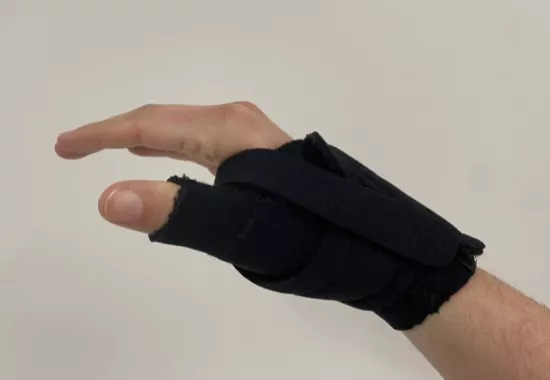The base of our thumb may just be a small part of our hand, but osteoarthritis in that area can have a significant impact, making the simplest tasks difficult.
The condition especially affects post-menopausal women, with figures indicating up to a third of women over 70 have this type of osteoarthritis.
Increasing numbers of people are experiencing the condition, and yet current treatments still leave patients with limited use of their hand.
Researchers from the Kolling’s, Institute of Bone and Joint have completed a clinical trial finding a combined approach of education, a splint to support the thumb, hand exercises and a pain relief gel, were a promising lead in helping people regain hand function.
More than 200 people, in two groups, were involved in the COMBO study, which assessed pain and hand function, grip strength, thumb base stiffness, and overall quality of life.
Findings:
- After six weeks, there was increased hand function for people who undertook the treatments and exercises compared to the control group.
- After 12 weeks, participants also reported a better quality of life and reduction in pain.
Senior author Professor David Hunter said many older adults affected by thumb base osteoarthritis feel there is nothing that can be done for the condition.
“This trial demonstrates clinically beneficial effects on hand function with readily available interventions,” he said.
“It indicates a simple mix of treatments can improve range of hand motion and make daily tasks, like opening a door or picking up an object, easier.”
The study, published in JAMA Internal Medicine, was led by the Kolling Institute’s Dr Leticia Deveza and Sarah Robbins.
“Previous studies on combined treatments in thumb base osteoarthritis have provided conflicting results,” said Dr Deveza.
“To our knowledge, ours is the first study to investigate a combination of treatments in thumb base osteoarthritis, and importantly, we’ve found a solution that could be of clinical benefit,” she said.
